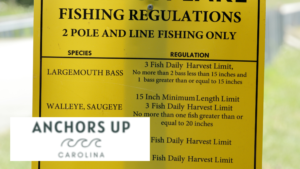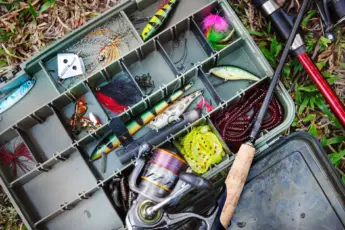As an avid angler, I regularly have to be educated on state vs federal fishing regulations. Without question, you can be punishable by law if you’re harvesting illegal fish. The most profound areas of overlap between the governing bodies are coastal waters. With that said, you’ll need to know first where to draw the line between the two. Secondly, what types of fish are under whose regulation? Here is what you need to know about state vs federal fishing regulations.
What Is The Purpose Of State Vs Federal Regulations
Although the primary goal of regulations is to preserve a healthy fish population, they do differ between state and federal. Here are the differences between the two.
State Regulations
The state regulations focus on nearshore waters, rivers, lakes, creeks, and ponds. The purpose of state regulations is to conserve fish populations both recreationally and commercially. Essentially, the state is ensuring that our waters do not become overfished.
Federal Regulations
Without a doubt, federal regulations are based on a much more broad approach. Rather than focusing solely on fish populations specifically, they cast a wider net, so to speak. Federal regulations preserve the marine ecosystem as a whole. Additionally, they manage fish populations nationally instead of by state.
Jurisdiction Of Federal And State Waters
When it comes to federal and state waters, each has agencies that monitor anglers. The goal is for the agencies to catch people who are breaking the rules set in place.
State Jurisdiction
In state waters, there are agencies that manage the fisheries within lakes, streams, rivers, and more. The number of agencies is highly dependent on the state. However, for the most part, they are the Department Of Natural Resources. The Department Of Natural Resources hires officers who travel via land and boat.
Federal Jurisdiction
In federal waters, NOAA, short for National Oceanic and Atmospheric Administration, manages the fishery beyond 3 miles from shore out to 200 miles. NOAA primarily monitors via a satellite system and focuses heavily on commercial fishing vessels. In addition to NOAA’s Office Of Law Enforcement, the US Coast Guard also contributes its efforts.
Type Of Federal And State Fishing Regulations
Interestingly, the federal and state authorities manage the fisheries in a different manner. Here is how the state versus the federal government manages offshore compared to inshore waters.
State Management Regulations
In state waters, the agency focuses on fishing seasons, size limits, license requirements, catch limits, and rules specific to certain bodies of water.
All of the above regulations are determined by studies. The studies weigh the health of the fish population in any given body of water. In some cases, the regulations will change on a yearly basis. For this reason, it is imperative to keep up to speed so you remain compliant.
Federal Management Regulations
As a former captain fishing in federal waters, I was required to carry a Highly Migratory Species permit in order to keep certain species of fish.
In regard to the management of federal waters, NOAA implements regulations on recreational and commercial anglers. The regulations include size restrictions, fishing seasons, catch limits, and quotes. Interestingly, NOAA is also involved in conservation efforts for protected habitats and endangered species.
How To Comply With Federal And State Regulations
As an angler, it is your responsibility to comply with state and federal fishing regulations. Remember, the regulations are in place to protect our fragile ecosystem. The last thing an angler wants is to cast a line in a body of water with little to no fish.
Anglers who fish offshore coastal waters need to be mindful of both state and federal regulations. Without question, the regulations overlap. Additionally, determining exactly where that three-mile mark stands can be challenging. For this reason, make sure to stay up to date on the latest regulations for offshore federal and state waters.
Lastly, always be sure to keep a valid fishing license on hand if you’re within the required age range. Furthermore, keep a regulations guidebook on hand to comply with size and season restrictions.
Fishing Regulations Differ Between State And Federal Waters
Without question, state regulations are focused closely on near coastal waters and inland waters. Conversely, federal regulations focus specifically on international and national waters from 3 miles out to 200 miles. If you’re an offshore angler, remember to remain compliant with both governing bodies.
I will be the first to admit that there is a definite gray area. As an offshore angler, I was often confused based on my position in the ocean. Do your best to know where you are when deciding to keep or release a fish.







